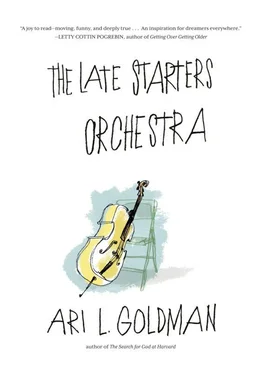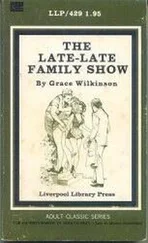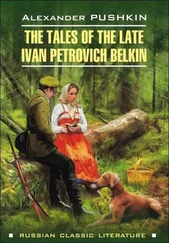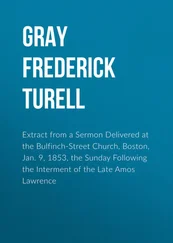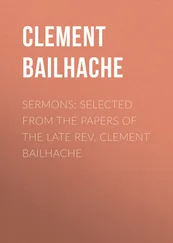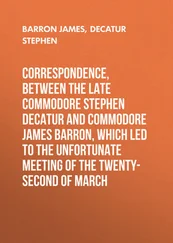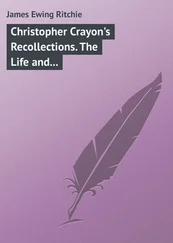It was a stable, if unhappy, place to work, but then an opportunity arose. One day she learned that her company, RBS, was moving to Stamford, Connecticut, and she was one of the lucky ones who was promised continued employment and asked to make the move. But there was another good offer on the table: “A really good exit package.” She took the latter and never looked back.
“I quit my job and I made this decision that I was only going to do things that I love to do. No more doing things that I hated. Like finance.”
And then the uncanny happened. One day Nishanti was waiting at a bus stop in Brooklyn with her gym bag. “I saw this woman across the street with a cello on her back,” she reminisced. “The cello! I’d always wanted to play the cello! So I made a deal with myself. If she walks this way I will ask her about her cello. I will ask her to teach me. And then I will dedicate my life to the cello. If, however, she walks in the opposite direction, then it wasn’t meant to be.”
Nishanti articulated to me her inner monologue. “Wow. She’s walking this way. She’s really walking this way. This was meant to be!”
“Then I saw my bus coming. I didn’t want to miss it. I was going to the gym. So I accosted her. ‘Do you just play or do you also give lessons?’ I asked her quickly. ‘I do both,’ she told me. I quickly took her contact info and hopped on the bus.
“That was a Friday. I called her after the gym and said, ‘I’m not just some crazy lady on the street. I know how to read music. I used to play violin.’ She said: ‘That’s okay. It happens to me all the time.’ ” The teacher’s name was Melina and she told Nishanti where to rent a cello and what music to buy. By Sunday Nishanti had a cello and on Monday she took her first lesson with Melina.
Nishanti didn’t quite dedicate her life to the instrument, but she did find her way to LSO. Eventually she had to go back to work but steered away from Wall Street and found a job in the nonprofit sector. Now she has what she describes as “a more balanced life” of work and music.
Several members of the orchestra were newly unemployed or underemployed. This was not entirely a surprise since, as I was entering my sixtieth year, the United States was entering its greatest economic downturn since the Great Depression. The economy was reeling and unemployment nationwide rocketed to new heights. The Great Recession was upon us and it hit New York particularly hard. In the next two years New York City’s unemployment rate would top 10 percent, even higher than the national average.
A lot of LSO members were hurting. For some, music might seem like a luxury. What they needed was work, not recreation. But music provided a refuge. Music is the best cure for a souring heart, Mr. J said. I was not sure what it could do for a souring economy, but it could certainly help some people through hard times.
One LSO violinist, a middle-aged man named Dan, had just been laid off from a New York advertising firm when I joined the orchestra. He was fifty and had been at the firm for twelve years, working mostly in ad placement and customer service. Dan’s musical journey went back to violin lessons in his fourth-grade class at Riverdale Country School, an exclusive private school in a tony section of the Bronx. It wasn’t exactly love at first note. “Like a lot of the kids I couldn’t get much more than a squeak out of it,” he said of his first violin. “I continued in fifth grade but then I gave up on it and turned to piano.” Piano is a pleasure after the violin. You hit a key and you get a note. No squeaks. Dan stayed with the piano through high school and then went off to college in Colorado where he eventually got a degree in piano pedagogy.
He never did much teaching, however. He took advantage of the economic boom of the 1990s and moved to Manhattan. Dan continued to play piano — he still has a 1946 Steinway baby grand in his New York apartment — but music was on the back burner. Eventually he was drawn back to the violin playing of his youth, in part, curiously, because of the computer revolution.
An early devotee of the social networks of AOL, Dan became one of the hosts of a classical music chat site, where people traded tips on musical news and offerings. In one chat, he told an online acquaintance that he fondly remembered playing violin in grade school. “You should definitely pick it up again,” his AOL friend urged. “You can get a violin for next to nothing on eBay.” This being the early days of eBay, such deals were possible, and before he knew it, he had a bow from a seller in Mississippi and a violin from another in Los Angeles. The whole purchase came to less than two hundred dollars.
In retelling the story, Dan marveled at how this online buddy, someone who he never met, inspired him in a way that a good friend or relative couldn’t. A good friend might have said, “Stop being a dreamer,” or, “Come on, you’re not a violinist, you’re a pianist,” or, “Don’t try to be a jack of all trades.” But a stranger on AOL could encourage him to “go for it.”
Why did he want to play the violin? “I was always fascinated by the power the string section has in an orchestra,” Dan said. “Also, I wanted to see if I could get more than the squeak out of it that I got in fourth grade.”
Dan found a violin teacher through a music school in Greenwich Village, where he lives, and began to take lessons. “She was impressed by my musicianship,” Dan recalled. “But she said that I had to stop listening with a ‘pianist’s ears.’ ”
Pianist’s ears . It was a term I hadn’t heard since my lessons with Mr. J. And it wasn’t a flattering one. For the string player, the pianist takes the easy way out. The piano lies! For the pianist, the C sharp and the D flat are the same. You get them by striking the same black key. But they are not the same note. You can hear that on a violin. You can hear that on a cello. But you can’t hear that on a piano. The piano lies.
String instruments like the violin and cello have no keys; they just have the musician’s fingers. And fingers can do what piano keys cannot. Fingers can find that halftone, that microtone — that nuance — that can never be achieved on a piano. On a piano, the note higher than a C and lower than a D are the same, but not on a violin or a cello. But you can hear it only if you listen with a violinist’s ears. Dan developed his violinist’s ear and soon was able to play in community orchestras like LSO.
Dan is not a calm guy. He fidgets. I found this observing him at the orchestra and when we went out one day for dinner at a deli on the Upper West Side. “I had anxiety as a student,” he said. “I was smart. I should have done better in school, but I’d freeze up at examinations.” Public performance is a real challenge for Dan but that is also one of the reasons he threw himself into orchestral playing. “I realize the value of sitting under pressure where there is a great reward,” he explained. “It has taken me some time to get this into my head. Getting on stage is a different ball game. No matter how well it goes in the practice room, this is where the real test is.”
Orchestral playing has improved his game. It’s a mountain for him to climb but it is worth the ascent. He revels in compliments, like the nod from Magda after playing a Bach fugue. “Exemplary,” she said. Dan’s elderly parents and his siblings have also come to appreciate his playing and have attended the LSO “open rehearsals.” His parents’ first reaction was, “What about the piano?” but they’ve come to appreciate the violin in their son’s life.
“The praise I get from all different levels of people has helped me realize that I am definitely an above-average player,” Dan said. At this stage in life, he is not after greatness; just above-averageness.
Читать дальше
